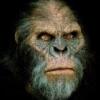Here is a link to the Nova program that deals with the discovery and identification of H. floresiensis. If Ketchum's and others' discovery is as well studied and scrutinized it will have similar results. It is also valuable to look at to get an idea of just how important bone morphology (shape, form) is to identification of human species. Enjoy!
http://www.pbs.org/wgbh/nova/evolution/alien-earth.html
However, just a note, anthropologists these days are thinking that H. floresiensis was an earlier offshoot of the human tree, and was actually not descended from H. erectus but from a much earlier lineage, perhaps H. habilis or even an unknown earlier one. It may not have even undergone island dwarfism at all, but been part of the original stock from which all later human species came.
Here is a rather famous chart of the knowns of mDNA in human species, both archaic and current:
It shows neanderthals, hobbits and denisova man as well in terms of DNA relatedness.
Part of the discussion of DNA would have to deal with hybridism. Both Denisovans and Neanderthals hybridized (not extensively, but some) with later waves of our kind of humans. We know this because of overlapping areas of DNA in existing human populations. If all modern sasquatches are results of previous hybridization with our own species, then the door is wide open, unfortunately. They could totally be morphologically (phenotypically) like archaic humans (tool-poor asian H. erectus, say) but genotypically more like us.
An awful lot of typical human behaviour and even locomotion is due to cultural build-up. Human babies brought up by animals cannot talk or even walk upright, never mind tool use. These characteristics must be taught by human parents. While certain genes must be present for upright walking and speech to be possible, long ago perhaps genetically modern humans existed that were incapable of doing those things because the cultural knowledge was not present. Maybe sasquatches too fit into that category. Until we have a sasquatch baby and try to raise it to live like we do, we will never know.

